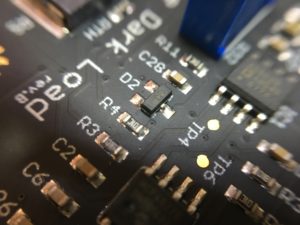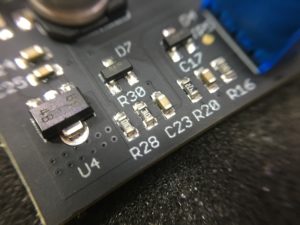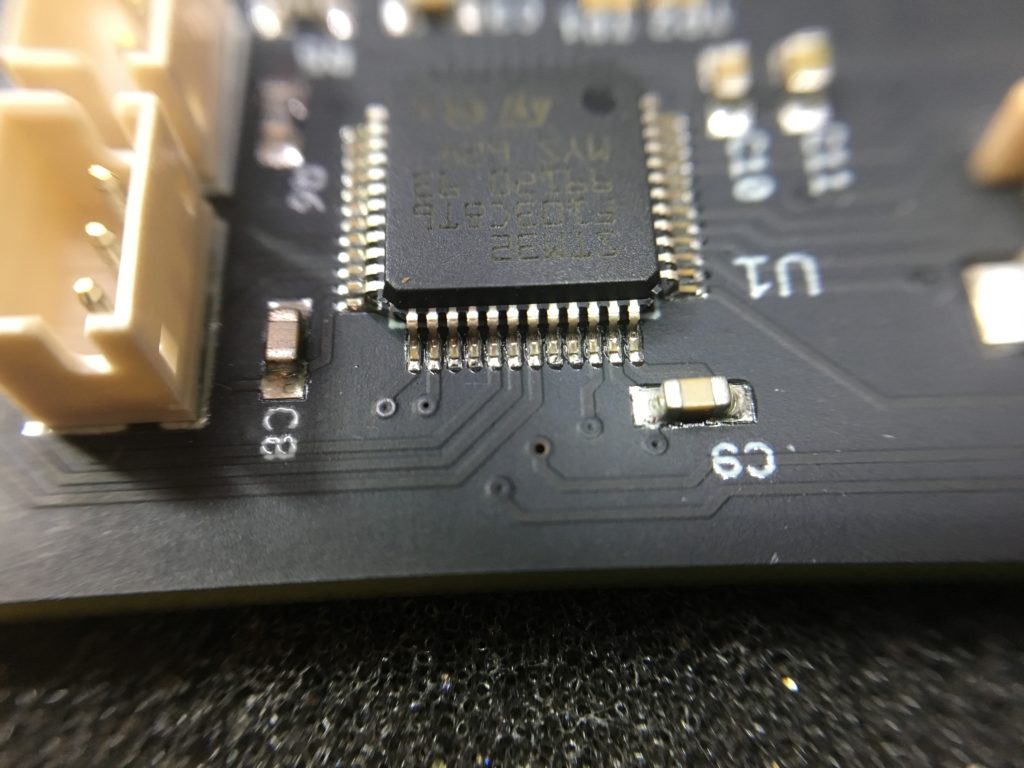I wrote this article to review the pcb assembly service offered by 7pcb.com (Bittele). They offered me a free of charge, complete turn-key pcb assembly service. I will start by discussing the advantages and disadvantages of professional pcb assembly services and then I will review the quality of the actual pcb they assembled for me. So if you are only interested in the review you can skip the first part.

Advantages of professional pcb assembly
If you are thinking about doing the pcb assembly in-house at a professional level you are quickly going to realize the initial investment cost is very high. You will need a minimum of: one pick and place machine, one stencil printing machine and one reflow oven. You probably also want other related equipment for inspection work and hand soldering tools. You will also need manpower and expertise which could raise the investment cost considerably. And finally when you consider there is very little ROI from this kind of investment you will quickly decide to outsource the pcb assembly service. In most cases outsourcing the pcb assembly service to an external company should be more cost effective.
Then there is the aspect of quality; a company specialized on pcb assembly services will have the expertise and manpower to provide excellent quality. They will also invest in their development by always having the latest technology so you the customer get all the benefits from the new assembly technologies. It is likely that you will hit a equipment related limitation doing in-house assembly if you do not upgrade the equipment regularly, for example you might end-up in a situation where you cannot reliably assembly the latest BGA package for a new processor.
There is also the aspect of quality control. A reputable pcb assembly house will also have a good established quality control service which you might benefit from by not having to do the quality control in-house. Sure you might want to do an extra quality control step in-house but it’s good to know at least the pcb’s are all functioning correctly when they leave the assembly line.
Disadvantages of professional pcb assembly
- One reason you wouldn’t want to outsource the assembly of your project is to protect intellectual property. If you are working on some top secret project or the newest idea that will revolutionize something, you might want to keep that as secret as possible so in that case you might do the pcb assembly in house.
- There are also cases when the turnaround time of a prototype is critical so you might not afford to wait a week for your pcb to come back from a professional assembly line. In that case it might make more sense to do the assembly in house.
- Cost is also an important reason you might not want to go with a professional pcb assembly house, especially for small businesses or hobbyists. Prices for pcb assembly services have lowered considerably in the past few years so this is less of an issue these days but still you won’t see too much individuals sending their one off hobby projects to a board assembly house.
How is the ordering process?
When working with board assembly houses they will generally start by requesting 3 things from you: the gerber files for fabricating the pcb(including the solder paste layer for creating a stencil), the component placement list and a BOM(bill of material), The pcb I used for this review was designed in eagle so I had to export the gerber files using the cam processor, next I generated the component placement list using mountsmd.ulp. I continued with generating the BOM by running bom.ulp.
I sent these files by email to someone at 7pcb.com and part of their process is to run an initial DFM (design for manufacturing) check. They detected I had in my bom an inductor that was larger in size than the actual placement I used on the PCB. Luckily they notified me about the issue and I was able to correct that but due to my mistake another day was added to the total processing time.
Another thing to consider when outsourcing work to China is their local holidays. It happened that this collaboration started right before the Chinese new year holiday. So if you are in a hurry don’t order something just before their holidays because that will add delays to the processing time. If I were to exclude the holiday, I think from start to finish they took about 10 days to assemble this board, and that includes the full service: pcb manufacturing, parts sourcing, my mistake with the inductor and the actual assembly.
Review
My design of the pcb originally included a mix of 0805 and 0603 passives but since was going to be assembled in a pick and place machine that can handle the smallest passives easily I designed to switch everything down to 0603. This way it’s small enough to easily place passives close to other components and it’s still accessible for debug & probing.
On the pcb I had a mix of smd and through hole parts and that is not desirable if you want to lower the cost. Generally speaking placing smd components is cheaper than soldering through hole parts. In my case, since this was a review, it didn’t matter because they offered me a free of charge service but you might want to optimize your design for manufacturing and include only smd components.
BOM consolidation is another aspects that might lower your cost. Instead of using separate 10K, 11K and 12K resistor, see if you can use 10K for all of those resistors. Same goes for all the passives on your board, try to use as few different values as possible because the final cost will depend on the number of different values you use.


The assembled board was packed very nice with lots of foam protection and inside an antistatic bag. Shipping was done by FedEx so it arrived very quickly.


I wanted a matte black soldermask finish and I know there are not allot of pcb houses that offer a matte black finish but it seems they work with one that does. As you can see in the picture above it looks very nice with this finish.
Component placement and alignment seems to be perfect and that is to be expected from a good quality pick and place process. I asked 7pcb.com and they said every pcb goes through the pick and place machine even if it’s a single piece that gets assembled.


The through hole components were hand soldered, that is the usual process with small volume runs. But look at the solder joints, they look perfect. The person doing this is certainly very experienced and was probably using very good tools and materials.
Regarding the solder paste and the solder wire used in the assembly, they are no-clean, low residue, lead free. The no-clean part is important, as you can see from the previous 4 images, there is very little flux residue left from the soldering process so the board doesn’t need to go through an extra cleaning step. The lead free part is important for meeting current regulations regarding the usage of hazardous substances in electronics.

Even the fine pitch components like this 64 pin LQFP microcontroller is perfectly aligned and soldered. It seems like they have a pretty good process because these joints look like top quality.
The big bluetooth module that you see missing on the board was left out because I am using one of those cheap HC-05 bluetooth modules from ebay. This kind of module cannot be sourced from a known supplier, only from ebay and grey market china and 7pcb.com do not source parts from those sources. It was either send them the part or leave it out. Sending them the part would have taken too long so I decided to leave it out and just assemble it after I receive the board.
I was curious what was the cost for assembling this board, what would it cost me to have this board assembled if I were to pay for it? They said the cost is $336, this includes all NRE and setup charges. This will reduce significantly as you order more pieces because a big part of the cost are those setup charges. To this cost you would add the BOM cost, which in my case was something like $25 on DigiKey.










